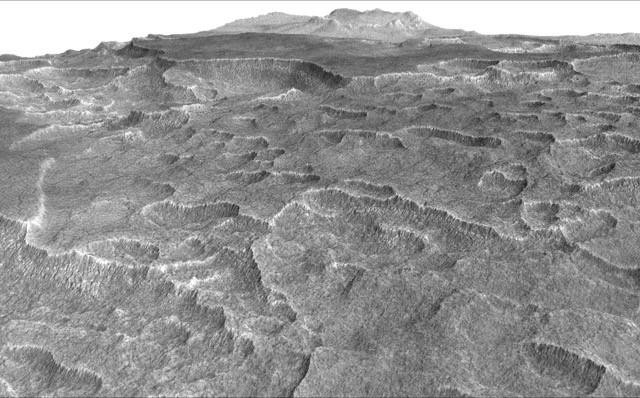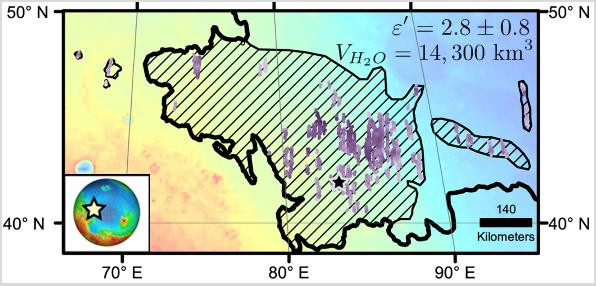Astronauts could use frozen lake discovered on Mars for drinking water
A vast, shallow repository of ice has been discovered in a convenient spot for landing and living on the Red Planet.

A frozen Martian underground lake contains about as much ice as would be made from all the water in the largest of the Great Lakes in North America, Lake Superior, researchers say.
The lake lies beneath the Utopia Planitia region in the mid-northern latitudes of Mars. It is between 80-170m thick and lies less than a metre below the surface of the planet at its highest point. In total the lake spreads over an area larger than the state of New Mexico in the US.
Ancient snow
"This deposit probably formed as snowfall accumulating into an ice sheet mixed with dust during a period in Mars history when the planet's axis was more tilted than it is today," says Cassie Stuurman of the University of Texas, co-author of a paper on the findings published in Geophysical Research Letters.
Stuurman and colleagues used data from a satellite orbiting Mars that passed over the Utopia Planitia region more than 600 times to map the subterranean landscape of this part of the Red Planet.
Drinking water
The deposit is significant, as it could be used as a source of water for any astronauts landing on Mars, the researchers say.
"This deposit is probably more accessible than most water ice on Mars, because it is at a relatively low latitude and it lies in a flat, smooth area where landing a spacecraft would be easier than at some of the other areas with buried ice," says study coauthor Jack Holt of the University of Texas.
The lake could once have been at least partially liquid, Holt says, but it is not clear whether there was once enough liquid present in the lake to support life.
Climate record
Co-author Joe Levy, also of the University of Texas, says that the ice under Utopia Planitia isn't just of interest when planning future human missions to Mars. It is also a record of Mars' mysterious climate history.
"We don't understand fully why ice has built up in some areas of the Martian surface and not in others," he says. "Sampling and using this ice with a future mission could help keep astronauts alive, while also helping them unlock the secrets of Martian ice ages."

"It's important to expand what we know about the distribution and quantity of Martian water," says Leslie Tamppari of Nasa's Jet Propulsion Laboratory in the US.
"We know early Mars had enough liquid water on the surface for rivers and lakes. Where did it go? Much of it left the planet from the top of the atmosphere. Other missions have been examining that process. But there's also a large quantity that is now underground ice, and we want to keep learning more about that."
© Copyright IBTimes 2025. All rights reserved.






















